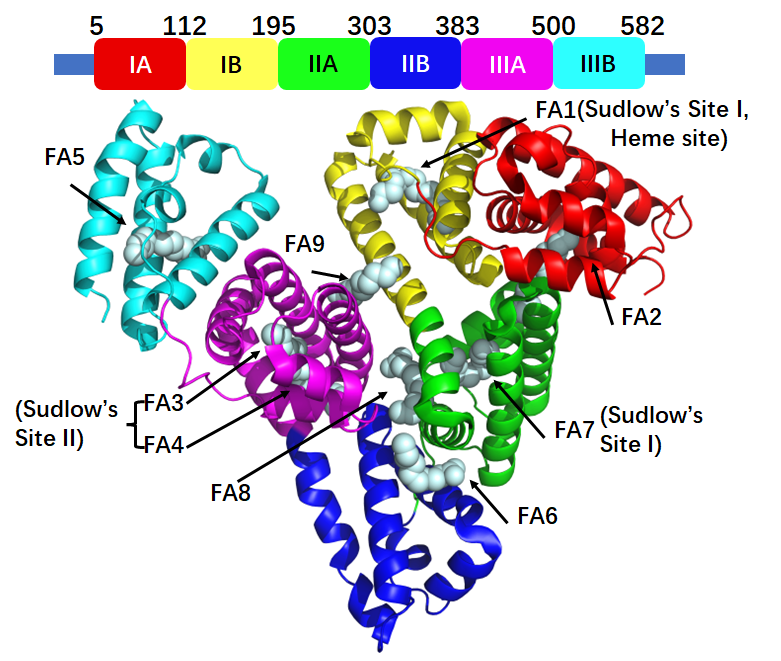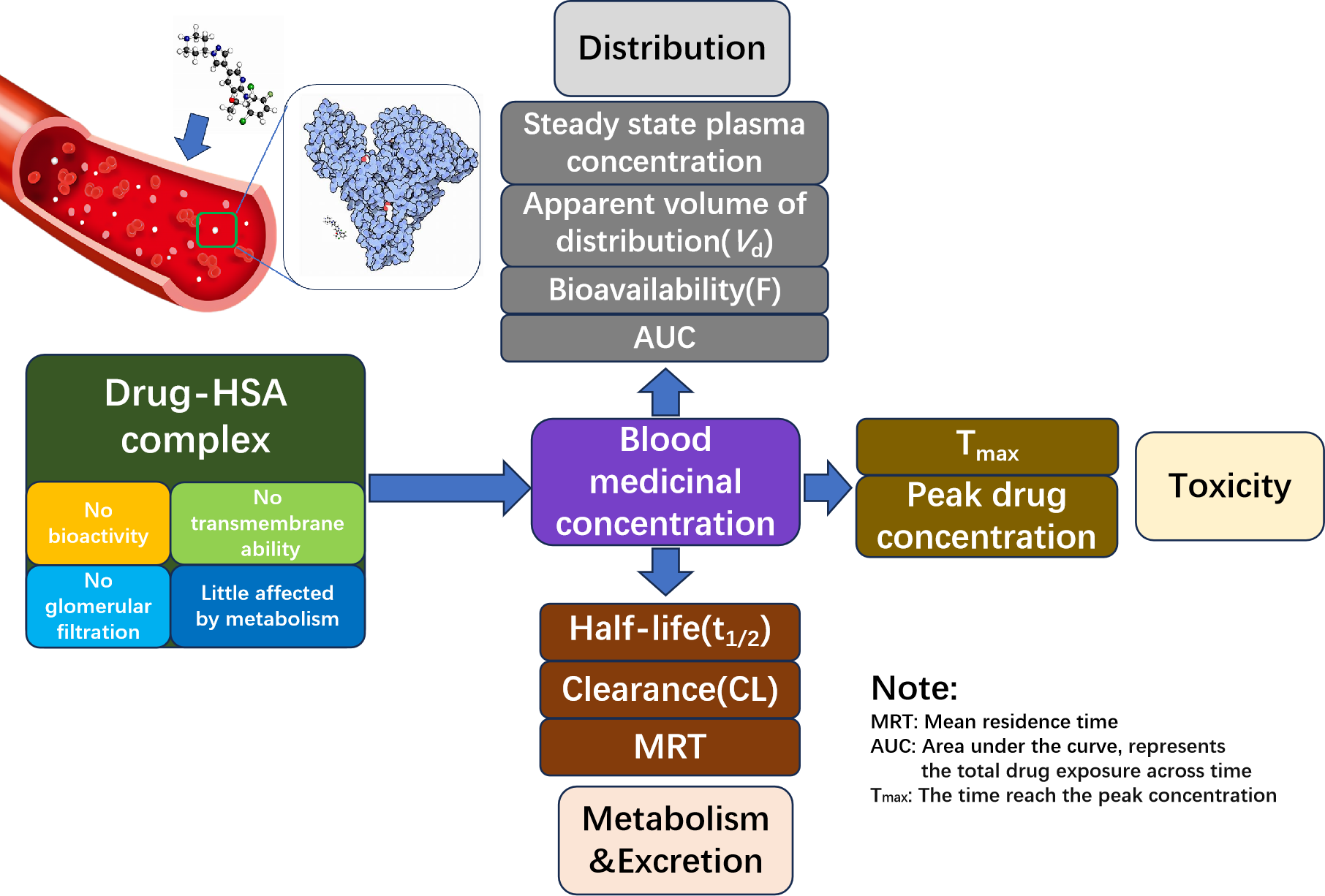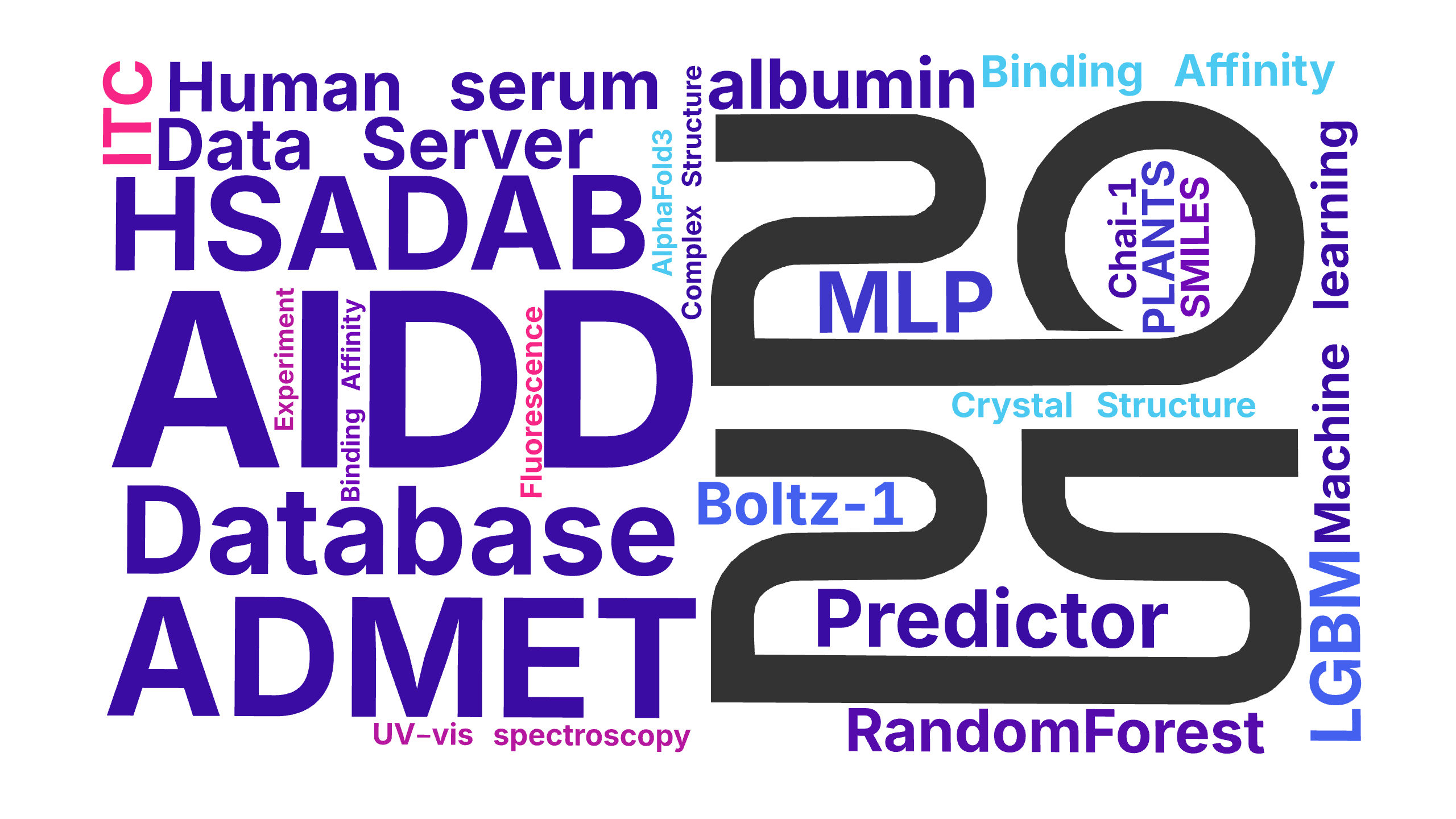What is the HSA protein?
HSA is a complex protein composed of 609 amino acids, with a molecular weight of 66.5 kDa and a maximum circulatory half-life of up to 19 days in human. Structurally, its secondary formation includes 67% α-helix, 23% stretched chain, 10% β-sheets as well as bends. HSA features a heart-shaped globular conformation, containing three homologous domains typically referred to as I (5–195), II (195–383), and III (384–582). Each domain is further divided in two subdomains, A and B, which are composed of four and six α-helices, respectively. HSA contains 9 fatty acid (FA) binding sites.


Why HSA is important?
The binding interaction between drugs and HSA is magnificent in pharmaceutical distribution, metabolism, excretion, and toxicity (DMET). When the drugs absorbed in blood, HSA interacts with medications, impacting their pharmacokinetics by affecting drug concentration levels in the blood. In binding state phase, the drugs show no bioactivity, no transmembrane ability, no glomerular filtration, and little affected by metabolism. This interaction influences the time it takes for the drug to reach its peak concentration, the peak drug concentration, the drug's half-life, and etc. Consequently, it indirectly affects the DMET of the medication. Therefore, binding affinities on HSA serve as a proactive approach to influence the pharmacodynamics and pharmacokinetics of preclinical drug candidates.


